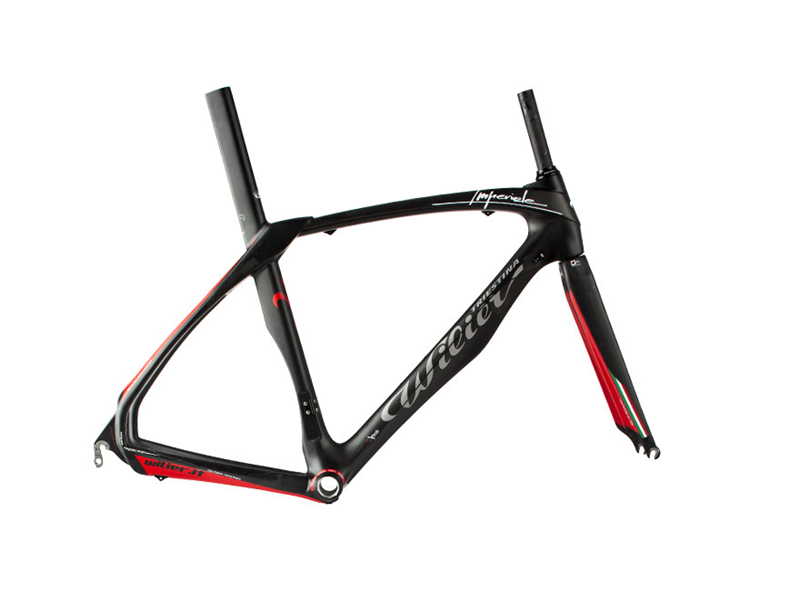Wilier Imperiale Road Bike
4
/5
REVIEWS
4.0
QIKRATE
0.0
WEB
0.0

|
|
|
|
Own this? Help your community (Tap a star to rate) |
|
|
|
|
|
|
|
DESCRIPTION
For the better part of a decade the road bike marketplace has been defined by a singular arms race: With each passing year carbon frames have gotten lighter and lighter to the point where sub-800g no longer astonishes. Sure, we're glad we're no longer racing on a 1250g frame, but likewise common sense tells us there are diminishing returns once you get below ~900g. The cost, the flex, the paranoia about possible fragility: these are things we wouldn't mind sparing ourselves. We're smart enough to know that the goal is to ride faster for a given power output, and that at a certain point your focus shouldn't be on shedding grams of mass and instead should be on shedding grams of drag. Cerv?lo built their powerhouse brand based on this principle. Ridley revitalized their brand along the same lines. And with the Imperiale you're seeing the same from Wilier, one of Italy's most-respected frame manufacturers.Wilier spent considerable time pondering aero issues in the development of their Cento Crono family of TT bikes. They consulted with aero mastermind John Cobb, and they've combined these lessons learned with details from the Cento1 to make their first-ever road frame specifically designed to maximize speed by minimizing drag.The aero priority of the Imperiale is made clear by the soft curvaceousness of the downtube. It's shaped with a modified beak to help clean the residual air coming off the rotation of your front wheel. And you'll notice the complex curves on the sides of the down tube. These add significant stiffness while helping guide the air over the sides of the tube toward the rear of the bike. The head tube forms a peak which helps lift the air up and away from your front wheel. There is a continuing compound curve along the sides of the headtube to also guide the air toward the rear of the frame. The top tube slopes away at a slight angle while tapering to a smaller cross-section, allowing the air from the headtube to smoothly flow through your legs and then to the rear. The seat tube is just wide enough to mask the rear tire, while the cut-out has a small gap to help release any compressed air that is trapped by the spinning rear wheel. The chainstays and seatstays both have trailing stabilizers on the rear of the tubes. These add more stiffness for quick accelerations while also serving to guide the air off the rear of the bike.Its aerodynamics shaping isn't the whole story with the Imperiale. Like the Cento1 you get asymmetric chainstays and an integrated seatmast to deliver maximum stiffness. Pedaling forces put different loads on the driveside chainstay vs. the non-driveside chainstay. Engineers have known this for over 20 years and Wilier modernizes the concept here. And think of the integrated seatmast as a true extension of the seat tube. These are two design details that translate into superior stiffness and superior use of your power.Also like the Cento1, the Imperiale uses Wilier's oversized bottom bracket construction that do
USER REVIEWS
| OVERALL RATING |
4 |
★★★★★
★★★★★
|
| VALUE RATING |
5 |
★★★★★
★★★★★
|
A very beautiful bike to look at. Very beautitiful indeed, hence the high rating. Nice stiff bottom bracket area, and very cool Integrated seatpost.
Not so great longitudinal stiffness. At times, it feels like it's understeering. The paintwork/decals/detailing could be better. But my, it's gorgeus!
My first Wilier, but not the last. I have since bought a Wilier Triestina as my commuter, and a Cento1Air as my trackday bike.




